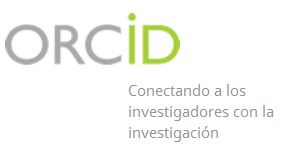Natural and Traditional Medicine at the primary level of care. Actions for its strengthening, Pinar del Río (2017)
Keywords:
Natural and Traditional Medicine, therapy, Primary health careAbstract
Introduction: The proper use of Natural and Traditional Medicine allows professionals to expand the scientific horizon in an integrative way.
Objective: To identify the elements that affect the practice of Natural and Traditional Medicine, and actions to favor its use in the primary level of care of the municipality of Pinar del Río.
Methods: It was an observational, descriptive study, from May 2016 to July 2017, in the four polyclinics of the Pinar del Río municipality. A diagnosis was made that allowed the elaboration of the action plan to strengthen the use of Natural and Traditional Medicine. The study universe considered the doctors and professors of the Basic Working Group (N006). The sample selection (n= 234), was carried out through sampling by authority criteria.
Results: Specialists in Comprehensive General Medicine predominated, with more than five years of experience, 30.3% do not use the MNT, 67.9% consider it useful, 58.8% recognize its effectiveness, the most used modality was Phytotherapy (69.6%), 43.2% and 38.9% respectively consider the supply of natural products and their acceptance by the population as regular. 83.3% considered the Pharmacotherapeutic Committee the space for analyzing indicators of Natural and Traditional Medicine. An action plan was designed using these techniques, focusing on six axes of fundamental activities and 23 tasks.
Conclusions: The main identified elements that stop the use of Traditional and Natural Medicine, due to its modifiable nature, are vulnerable to change, with the proposed action plan.
Downloads
References
2. Sánchez González C, Debesa García F, Yañez Vega R, López Romo A. Enfoque de la Autoridad Reguladora Cubana sobre la reglamentación para la Medicina Natural y Tradicional. Rev Cubana Plant Med. 2014 Sep [acceso 03/10/2018];19(3):267-79. Disponible en: http://scielo.sld.cu/scielo.php?script=sci_arttext&pid=S1028-47962014000300014&lng=es
3. Moreno Montoya A, Cañada Rodríguez A, Antúnez Coca J, Díaz Montes de Oca C, Pineda A. Uso de la fitoterapia en 3 clínicas estomatológicas de Santiago de Cuba. EDISAN. 2011 Abr [acceso 03/10/2018];15(4):489-94. Disponible en: http://scielo.sld.cu/scielo.php?script=sci_arttext&pid=S1029-30192011000400013&lng=es
4. Álvarez Díaz TA. Acupuntura. Medicina Tradicional Asiática. La Habana: Capitán San Luis. 1992 [acceso 21/11/2017]. Disponible en: http://bvs.sld.cu/libros/manual_acupuntura_asiatica/indice_p.htm
5. Cuba. Ministerio de las Fuerzas Armadas Revolucionarias. Programa para el desarrollo de la Medicina Tradicional y Natural. La Habana: Servicios Médicos de las FAR; 2010.
6. Cuba. Ministerio de Salud Pública. Programa para el desarrollo y la generalización de la medicina tradicional y natural. La Habana: MINSAP; 2011.
7. Cuba. Ministerio de Salud Pública. Programa para la generalización y desarrollo de la Medicina Tradicional y Natural. La Habana: MINSAP; 1999.
8. Organización Mundial de la Salud. Estrategia de la OMS sobre medicina natural y tradicional, 2014-2023. Ginebra: OMS; 2014.
9. García Milián AJ. El consumo de medicamento y su medición. La Habana: ECIMED; 2015.
10. García Rodríguez JF. El pensamiento complejo como método de estudio de la salud. García Rodríguez JF, Betancourt JA, editores. Tabasco: Dirección de Calidad y Enseñanza en Salud; 2010.
11. Rodríguez Ramos R, Rodríguez Pérez J. Psiconeuroinmunoendocrinología y
Published
How to Cite
Issue
Section
License
Those authors who have published with this journal, accept the following terms:
a. The authors will keep their copyright and guarantee the magazine the right of first publication of their work, which will be simultaneously subject to the Creative Commons Attribution License that allows third parties to share the work as long as the author and first publication of this magazine are indicated.
b. The authors may adopt other non-exclusive license agreements for the distribution of the published version of the work (e.g., deposit it in an institutional telematic archive or publish it in a monographic volume) as long as the initial publication in this journal is indicated.
c. Authors are allowed and recommended to disseminate their work through the Internet (e.g.: in institutional telematic archives or in their web page) before and during the submission process, which may produce interesting exchanges and increase the number of citations of the published work. (See The effect of open access).





